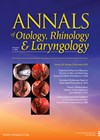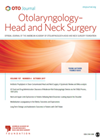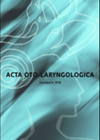
Journal Reviews
Is Gamma Knife Surgery effective for intracanalicular vestibular schwannomas?
Vestibular schwannomas (VSs) are rare, occurring in approximately five per 100,000 adults a year. In circa 8% of cases, the VS is contained within the internal auditory canal, i.e. intracanalicular (iVS). Although radiosurgery is a recognised treatment modality for VSs,...
Global incidence of sporadic vestibular schwannoma
The incidence rate of sporadic vestibular schwannoma (VS) has commonly been quoted as one in 100,000. However, since the advent of screening for asymmetrical hearing loss and increased availability of modern MRI scanning, more recent studies have shown the incidence...
Lateral skull base surgery using the endoscope
Endoscopic lateral skull base surgery could be performed via less invasive techniques due to wide panoramic visualisation of the operative field. With less invasive techniques, patients have been shown to require shorter recovery time and reduced postoperative pain. In this...
Extrapolating lessons from vestibular schwannoma management
This paper presents a delightfully simple and sensible hypothesis for the management of benign schwannomas in the head and neck region. They have taken the approach used for the management of vestibular schwannomas and used the same principles to assess...
Results of hypoglossal-facial nerve anastamosis techniques for facial palsy
Preserving facial nerve function is of prime importance in acoustic neuroma surgery. A comprehensive knowledge of anatomy, experience and surgical precautions can reduce the incidence significantly. Important considerations are when and how to repair if injury occurs. Several options include:...
Preserving hearing in NF2 patients
Neurofibromatosis type 2 (NF2) is known to result in bilateral hearing loss, even when there is no significant tumour growth. The cause is postulated to be multifactorial: stretching and compression of the cochlear nerve by the tumour, impairment of labyrinthine...











